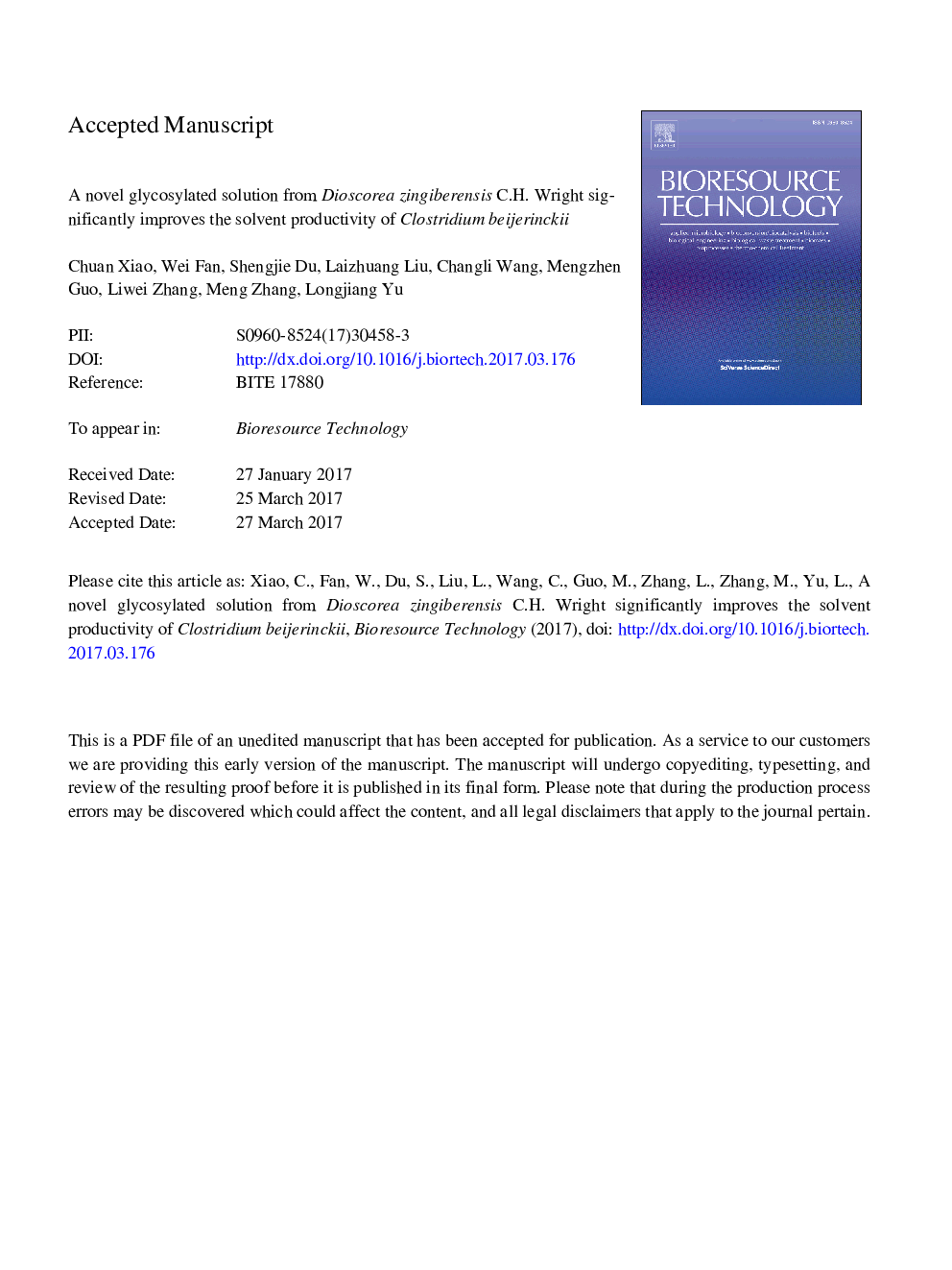| Article ID | Journal | Published Year | Pages | File Type |
|---|---|---|---|---|
| 4997048 | Bioresource Technology | 2017 | 26 Pages |
Abstract
The economics of bio-solvent production are largely dependent on the cost of the fermentation substrate. Dioscorea zingiberensis C.H. Wright (DZW), the main raw material used to produce saponin, contains 13-18% starch which can be directly saccharified to a saccharification liquid of DZW starch (SLDS) that contains abundant nutrients. In this study, the water-soluble micromolecule compounds in SLDS were quantified through 1H NMR. Using SLDS as the substrate to conduct ABE fermentation by Clostridium beijerinckii, the fermentation cycle was shortened 24 h, the maximum biomass and consumption rate of the glucose significantly increased, and the productivity of total solvents were increased by 0.244 ± 0.010 g/L/h compared to standard P2 medium. Expression analysis of genes encoding key enzymes involved in acetone and butanol production and glucose consumption showed that they were induced by SLDS. Taken together, SLDS is a useful and renewable glycosylated solution for ABE fermentation.
Keywords
Related Topics
Physical Sciences and Engineering
Chemical Engineering
Process Chemistry and Technology
Authors
Chuan Xiao, Wei Fan, Shengjie Du, Laizhuang Liu, Changli Wang, Mengzhen Guo, Liwei Zhang, Meng Zhang, Longjiang Yu,
